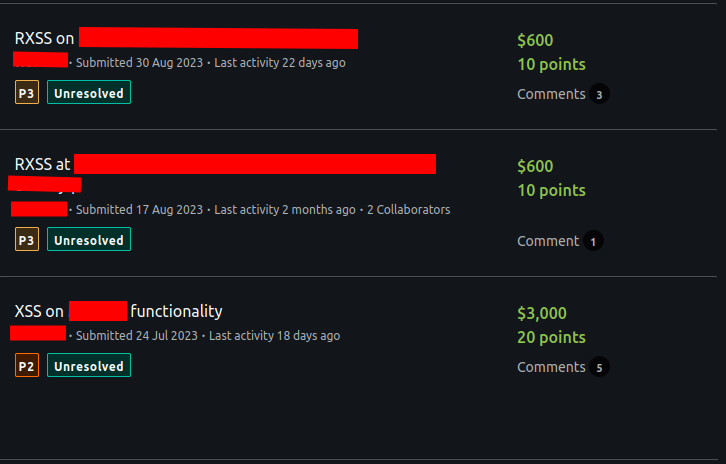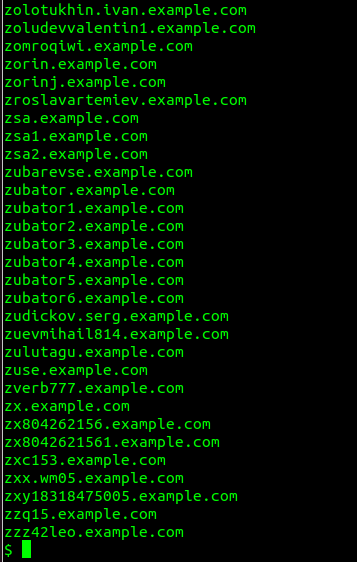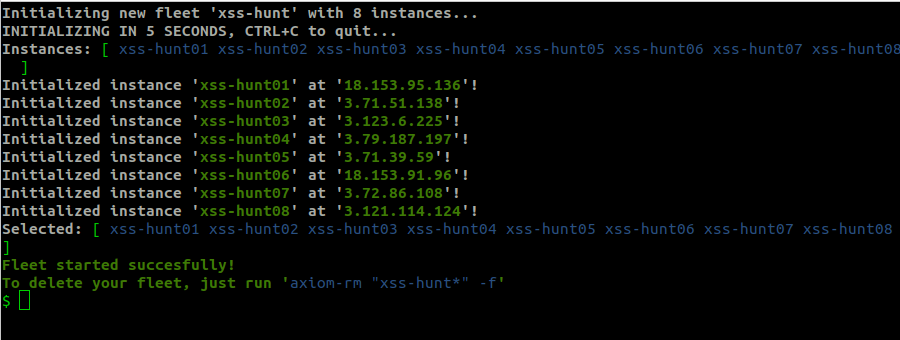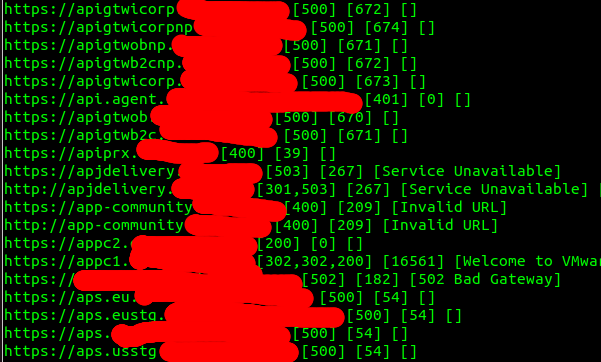Mass Cross Site Scripting Hunting
In this article, I would like to cover how it is possible to efficiently check thousands of endpoints for potential Cross Site Scripting vulnerabilities in a short amount of time. The technique presented can be completely automated (although I do recommend some manual data filtering to save on server resources). This blueprint could be used to enhance your existing Bug Bounty automation setup. I will be using Axiom tool to help scale XSS hunting to the next level.

If you are not very familiar with Axiom tool, I will highly suggest you to follow previous parts, since it has more in depth description about main features.
Getting Target Subdomains
To find reflected XSS first, you will need to do proper homework. Subdomains could be collected using various bug bounty tools like amass, subfinder and etc. Many tutorials already explain building a large list of subdomains, so I won’t expand it in this article. I have covered how it’s possible to do it with help of axiom in this article.
Also, I do recommend picking a large scope program which has a lot of apex domains. Companies with a lot of attack surface and with old infrastructure have higher probability to have Cross Site Scripting vulnerabilities. The Bug Bounty Game is about calculating where potential vulnerabilities could occur.
For this particular example, I will use chaos to gather the subdomains for example.com. You will need to configure the necessary API keys to use it.
chaos -silent -d example.com | tee hostnames.txt

Now let’s check which of these hosts are alive. I will use Axiom to speed up this process. Firstly, we will need to spin up some instances:
axiom-fleet xss-hunt -i 8

Next, I suggest editing the httpx.json module located at ~/.axiom/modules/ a little bit to scan more ports and give some extra information like status code and response title:

Now let’s run the axiom-scan command for the selected hosts:
axiom-scan hostnames.txt -m httpx | tee alive.txt

Filtering Subdomains
It’s time to do some manual work in order to save some valuable cloud resources. The first task after collecting alive hosts is to filter them. There are a couple of ways to do it, and every bug hunter has its own approach. The multiple grep commands with some status code and title regex filtering will do a trick. Many hunters have certain blacklist words to filter out subdomains. For this particular example, I want to filter blog, api words from each line and select only subdomains which have 200 status code:
cat alive.txt | grep -vE "blog|api" | grep 200 | awk '{print $1}' > alive_selected.txt
Collecting Endpoints
The endpoints for selected hosts could be collected multiple ways, depending on the tooling you want to select. I suggest combining multiple tools and merge results to one huge list. The more tools you use at this point, the more attack surface you will have against targets. In this post, I will show around 2 methods that could be used for this purpose.
Method #1: Host crawling
There are multiple unique tools for this purpose like katana or paramspider. For this tutorial, I will use the katana since it does not require a special setup. As far as I checked on the last axiom version, the paramspider was not installed correctly on the default provisioner. You need to install it manually on one of instances and make snapshot of it. Anyway, if you just decide simply use project discovery’s katana for host crawling, I suggest using this command with axiom:
axiom-scan alive_selected.txt -m katana -duc -silent -nc -jc -kf -fx -xhr -ef woff,css,png,svg,jpg,woff2,jpeg,gif,svg | tee -a katana.txt
Method #2: Web archive data
Gathering web archived endpoints could be helpful as well to form an endpoint list. There are multiple tools for this purpose like waybackrobots, waybackurls, gau, gauplus and etc. For this setup, I will utilize gau, since it is most advanced at the time. To unlock its full potential I want to modify gau.json axiom module as well located at ~/.axiom/modules/:

I have added some threads to speed up the process, included subdomain collection and blacklisted unnecessary extensions. For the scanning, since we will be using –subs flag, I suggest to use apex subdomains wordlist as in this example:

Finally, you can execute the axiom scan with the gau module:
axiom-scan targets-wildcards.txt -m gau | tee -a gau.txt

Preparing Gathered Endpoints for XSS checks
Collected lists will contain much data that requires processing. Last thing you want to pass gathered endpoints to next tool without any filtering. At first, I just recommend selecting only those URLs which already have parameters and sort unique endpoints. For this purpose, I like to use another tomnomnom’s tool — qsreplace:
cat gau.txt katana.txt | grep -aiE '^http' | grep -aiE '\?' | qsreplace FUZZ > fuzzable_urls.txt
Another thing that I like to do is to filter out some parameters and some static endpoints. It really depends on case by case. For example, I have used gf and filtered out some specific keywords using basic regex:
cat fuzzable_urls.txt | grep FUZZ | gf xss | grep -iavE 'pdf|txt|\?l=FUZZ$|\?contry=FUZZ$|\?q=FUZZ$|is/image' > filtered_fuzzable_urls.txt
Scanning Cross Site Scripting vulnerabilities
Once you have a fuzz endpoint list available, you are ready to do some XSS hunting. I like to use freq tool for this, which could be scaled with axiom as well. It is not yet included as an axiom module yet, so you might need to add this as a module yourself. I have already covered how you can achieve it in this post. Finally, you are ready to do some XSS fuzzing using axiom instances:
cat filtered_fuzzable_urls.txt | qsreplace "';a=prompt,a()//" > fuzz.tmp && axiom-scan fuzz.tmp -m freq | grep -v 'Not'
As you can see, I have used ';a=prompt,a()// as the payloads for this case, since it does have capabilities bypassing some WAFs.
Final Words
If you follow this guide carefully, you are ready to start hunting XSS on a mass scale. Remember that you should add your insights into this approach so you can stand out from the crowd. I think this could only give you some insights into how mass hunting could be achieved. I am active on Twitter, check out some content I post there daily! If you are interested in video content, check my YouTube. Also, if you want to reach me personally, you can visit my Discord server. Cheers!
